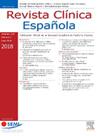利用估计脉搏波速度 (ePWV) 和体重指数 (BMI) 有效预测新发糖尿病。
IF 2.3
4区 医学
Q2 MEDICINE, GENERAL & INTERNAL
引用次数: 0
摘要
目的估计脉搏波速度(ePWV)和体重指数(BMI)是预测新发糖尿病的重要指标。本研究旨在评估结合 ePWV 和 BMI 对新发糖尿病发病率的影响和预测价值。方法对富康医疗(中国)的一项队列研究进行了二次分析,该研究涉及 211,833 名符合条件的参与者。结果在平均 3.12 年的随访期内,3000 名男性(1.41%)和 1174 名女性(0.55%)被诊断为糖尿病。逻辑回归显示,体重指数、甘油三酯、丙氨酸氨基转移酶、血尿素氮、肌酐清除率、ePWV 和糖尿病家族史是新发糖尿病的高危因素。与单独使用 ePWV 或 BMI 相比,ePWV 和 BMI 的组合提供了更高的 ROC 曲线下面积(0.822)。结论ePWV和BMI水平升高是新发糖尿病的独立风险因素,与单独使用其中一个指标相比,结合使用这些指标可提高预测准确性。本文章由计算机程序翻译,如有差异,请以英文原文为准。
Predicción eficaz de la diabetes de novo con velocidad estimada de onda de pulso (ePWV) e índice de masa corporal (IMC)
Purpose
Estimated pulse wave velocity (ePWV) and body mass index (BMI) are significant predictors of new-onset diabetes. This study aims to evaluate the impact and predictive value of combining ePWV and BMI on the incidence of new-onset diabetes.
Methods
A secondary analysis was conducted on a cohort study by Rich Healthcare (China), involving 211,833 eligible participants. Logistic regression analysis identified factors influencing diabetes occurrence, while ROC curve analysis assessed the predictive value of ePWV, BMI, and their combination for new-onset diabetes.
Results
Over a mean follow-up period of 3.12 years, 3,000 men (1.41%) and 1,174 women (0.55%) were diagnosed with diabetes. Logistic regression revealed that BMI, triglycerides, alanine aminotransferase, blood urea nitrogen, creatinine clearance rate, ePWV, and family history of diabetes are high-risk factors for new-onset diabetes. The combination of ePWV and BMI provided a higher area under the ROC curve (0.822) compared to ePWV or BMI alone.
Conclusion
Elevated levels of ePWV and BMI are independent risk factors for new-onset diabetes. Combining these measures enhances predictive accuracy compared to using either indicator alone.
求助全文
通过发布文献求助,成功后即可免费获取论文全文。
去求助
来源期刊

Revista clinica espanola
医学-医学:内科
CiteScore
4.40
自引率
6.90%
发文量
73
审稿时长
28 days
期刊介绍:
Revista Clínica Española published its first issue in 1940 and is the body of expression of the Spanish Society of Internal Medicine (SEMI).
The journal fully endorses the goals of updating knowledge and facilitating the acquisition of key developments in internal medicine applied to clinical practice. Revista Clínica Española is subject to a thorough double blind review of the received articles written in Spanish or English. Nine issues are published each year, including mostly originals, reviews and consensus documents.
 求助内容:
求助内容: 应助结果提醒方式:
应助结果提醒方式:


